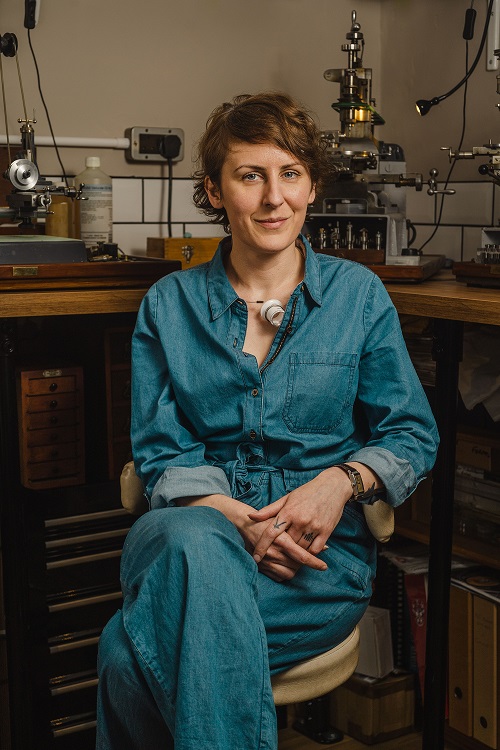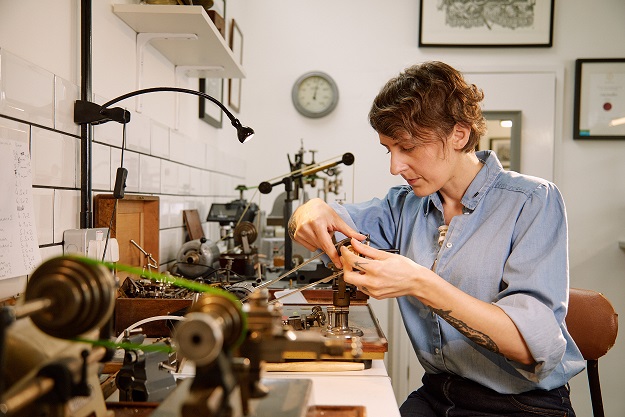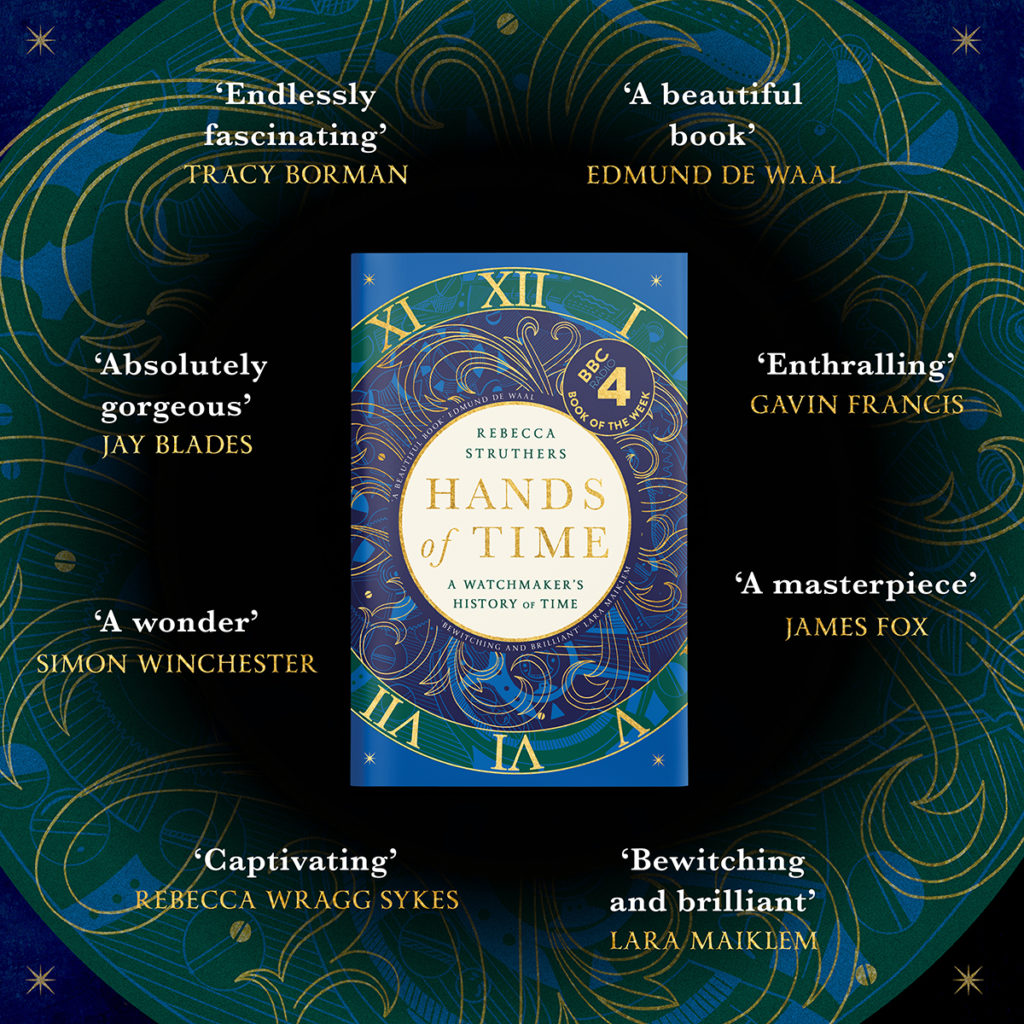
Rebecca Struthers may have not been part of our watch team for quite some time, but that doesn't mean we have forgotten about her! As well as working at events together at exciting places like The Science Museum, she has given lectures for our watch fans. During her last event with us (over 150 people logged on during lockdown), there were many questions we didn't get time to ask. Ahead of our next event together we wanted to chat to Rebecca and ask our most burning questions about her horological life and work.
Photo credit: Mike Smith
FELLOWS: I sit near to our watch team so am no stranger to how intricate watch movements are. I see how organised you need to be when dealing with the tiny parts that make up a watch. How much does the precision of horology feed into other areas of your life?
REBECCA STRUTHERS: These days, my life away from the bench couldn’t be any more different from the precision I need for watchmaking. It’s something that’s grown over time so it could be because I’ve worked with them for so long now. They’re beautiful objects that can tell us so much about the people who made and wore them, but they’re just that, objects. We don’t have to be controlled by them if we don’t want to be. I’m not one for living my life to within the second, or minute, for that matter.
Your book, Hands of Time, is wide-ranging as well as being stunning. Could you let us know a little bit about what the process was to design that beautiful cover and the illustrations inside. Is it all your handiwork?
I approached the creation of this book in the same way I design and make watches. I’m a watchmaker. I’ll never be the artist that someone who does it every day will be in the same way I’ll never be as good as a lifelong engraver or enameller. I worked with a creative A-team! The cover artwork is by the incredible artist Holly Ovenden; long-term collaborator and friend, photographer Andy Pilsbury; and my husband, fellow watchmaker and illustrator Craig Struthers. He trained as an illustrator after leaving school and still draws every day.
There is a lot of information in there but I am sure that you had to restrain yourself in some areas. Is there anything you wanted to include in your book but weren’t able to?
Editing back the volume of material I’d researched and written was the hardest part of writing, there must be three times what’s in the book on the cutting room floor. If it wasn’t so important to stay on piste, I would’ve loved to have written more about how animals and plants keep track of the time. Nature is very important to me, I’m out in the garden whenever I have time and animal mum to an assortment of rescues.
Given the vast subjects covered in the book, could you give us an insight into how you went about your research for it? Was it conducted over a very long period of time? Or, did you already have a lot of the information from your work and previous studies?
There are parts of this book I’ve been researching for over 15 years and others I found for the book so it’s a combination. There’s also a lot of memoir, how I discovered watchmaking, started my training and descriptions of some of the amazing pieces I’ve handled over my career which enters its 20th year this year. That ages me!
In 2017, you became the first watchmaker in British history to earn a PhD in horology. Can you tell us a bit about your thesis? Does its subject area feature in the book at all?
My thesis was on the emergence of early mass produced watches. They were a kind of forgery which, as they were cheap and made no scientific impact, had been largely ignored by researchers. What they were was the beginning of accessible portable timekeepers which, in turn, revolutionised our personal time, particularly when we were on the move. It all started with me finding my first forgery signed under the pseudonym John Wilter while I was working at Fellows Auctioneers. It’s now the subject of Chapter 5 in my book – Forging Time.
We were all working at a fun event at The Science Museum a couple of months ago where the theme was focused on fakes. Given your experience with researching fakes and dealing with them in your previous roles at auction houses, what would you say is the first thing to look for when spotting a fake?
There’s a lot to be said about going with your gut, but, modern fakes can be really tricky. The quality of fake watches is getting higher and higher. The days of Rulexes with terrible quartz movements has long gone! For anyone looking to buy a watch, if you’re not 100% about what you’re looking for, it’s always best to check with experts and ask for advice.
We have a lot of watch collectors and amateur horologists who bid in our auctions and come to our events. What would be the one piece of advice you would give to anyone looking to turn their interest in horology into a career as a watchmaker? Where did your interest in watches come from?
I discovered watchmaking whilst training as a jeweller and silversmith. It just so happened that the course was taught in the same building. That was the British Horological Institute course which is now distance learning only. That’s great for flexibility and not having to move for study but challenging as you need workshop access. Unlike when I started out, there are some great 1-day watchmaking experience courses you can do at places like the Epping Forest Horology Centre. That’s a great starting point to figure out whether you like being at the bench.
The watches you and Craig produce are such beautiful and intricate timepieces – I am sure a lot of work goes into each one. What is the most difficult watch you have ever made?
They’re all challenging in their own way. The most technical has been Project 248 which was our first completely in-house movement. We’ve made virtually all the parts (except springs and jewels) ourselves. This is made from scratch using our stable of vintage and antique machines. It’s been a huge learning curve, and taken an awful lot longer than we expected, but an amazing experience.

Photo credit: Andy Pilsbury
You can buy your own copy of Hands of Time: A Watchmaker's History of Time by Rebecca Struthers now. The Spectators' Helen Carr said of the book:
Struthers eloquently demonstrates that time can only be understood by humans in relation to nature, memory and mortality. She delivers her story through her professional understanding of horology and her personal relationship with the pieces she handles. Every page glitters with details of her experience and the people she has learned from. The book is evidence of a lifelong labour of love, and reading it is time well spent.

In Hands of Time watchmaker and historian Rebecca Struthers welcomes us into the hidden world of watchmaking. Her book offers a personal history of watches that spans centuries and continents.
Rebecca will be talking to us about her book, Hands of Time at our next event. It is an intricate and uniquely personal exploration of the history, science, philosophy, and craft of timekeeping.
More information is available on our event page.












